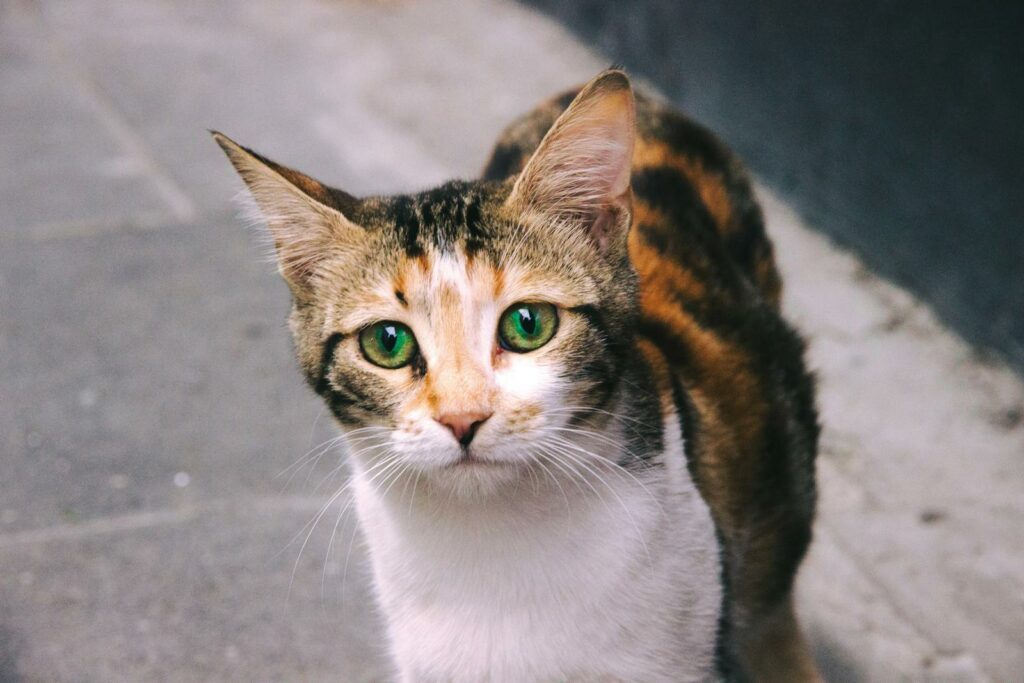Creating a welcoming and practical litter box setup for your feline friend can make a world of difference in your life and your cat’s. A well-maintained litter box helps keep your home clean and ensures your cat is happy and comfortable. Here’s how to get started on setting up the perfect litter box for your beloved pet.
First, understand that every cat is different, and what works for one might not work for another. It’s essential to observe your cat’s behavior and preferences. Still, there are some universal best practices you can follow to create an ideal litter box environment.
“A clean, accessible litter box reduces stress and encourages your cat to use it consistently,” advises Dr. Jane Doe, a renowned veterinarian and feline behaviorist.
Here are some key considerations for setting up the perfect litter box:
- Location: Place the litter box in a quiet, low-traffic area where your cat can have some privacy.
- Size: Ensure the box is large enough for your cat to turn around comfortably. Generally, bigger is better.
- Type of Litter: Experiment with different types of litter to see which your cat prefers. Options range from clumping clay to eco-friendly recycled paper.
- Number of Boxes: A good rule of thumb is to have one more litter box than the number of cats you own.
- Cleaning Routine: Scoop the litter box daily and perform a thorough cleaning once a week.
Taking these steps can significantly improve your cat’s experience and prevent common issues like accidents or litter box avoidance. In the next sections, we’ll dive deeper into each aspect to help you create the ultimate litter box setup.
What are the best litter types for cats?
When selecting the best litter type for your cat, clumping clay litter is a popular choice due to its ability to form solid clumps when wet, making it easier to scoop and maintain cleanliness. This type of litter is also widely available and relatively affordable. Silica gel crystal litter is another excellent option. It is highly absorbent and controls odors effectively by trapping moisture. This type of litter is also low-dust, which can be beneficial for cats with respiratory issues and for keeping your home cleaner.
Natural and biodegradable litter, such as those made from corn, wheat, or pine, is gaining popularity among environmentally-conscious pet owners. These litters are often flushable, compostable, and free from harmful chemicals, making them a safer choice for both cats and the environment. For cats with allergies or sensitivities, unscented litters are recommended. Scented litter can sometimes cause respiratory issues or skin irritations. Opting for an unscented variety can help ensure your cat’s comfort and health.
For cats with allergies or sensitivities, unscented litters are recommended. Scented litter can sometimes cause respiratory issues or skin irritations. Opting for an unscented variety can help ensure your cat’s comfort and health. Pellet litter, often made from recycled paper or wood, is another viable option. They are generally low-dust and can be more comfortable for some cats to walk on. Additionally, pellet litters tend to be more absorbent and can help with odor control.
What is the ideal location for a litter box?
The ideal location for a litter box is a quiet, low-traffic area in your home. Cats prefer privacy when they are using the litter box, so placing it in a secluded spot can help them feel more comfortable and secure. Avoid placing the litter box near loud appliances or in areas with sudden noises, such as near a washing machine or a furnace. Loud noises can startle your cat and make them reluctant to use the litter box.
Ensure the litter box is easily accessible to your cat. If you have a multi-story home, consider placing a litter box on each level to prevent your cat from having to travel too far to reach it. Keep the litter box away from your cat’s food and water bowls. Cats are naturally clean animals and prefer to keep their eating and elimination areas separate.
Provide adequate ventilation in the area where the litter box is placed. Good airflow can help reduce odors and keep the environment more pleasant for both you and your cat. Consider your cat’s preferences and habits when choosing a location. Some cats may prefer a more open area where they can see their surroundings, while others might feel safer in a more enclosed space.
How many litter boxes should a household have?
one cat, Choosing you the should wrong ideally type have of two litter litter can boxes also. be If problematic you. have Some two cats are very, particular three about litter the boxes texture are and recommended scent, of and their so litter on.. that no Not cat having felt a stressed litter or box crowded on when each needing level to of use your the home bathroom can. be Cats inconvenient are for naturally your territorial cat, especially animals, if they have multiple older litter or boxes can mobility help issues mitigate? any Ensure potential conflicts are.
acing litter boxesIgnoring on your different cat’s levels preferences of for the litter house box ensures type that can cats lead have to convenient issues. access Some cats prefer where open their boxes are open, while others can feel more especially secure important for covered older cats. or Observe those with cat mobility issues behavior. Finally, having an adequate number of litter boxes can help maintain cleanliness and hygiene. With more boxes available, each one is likely to be used less frequently, making it easier to keep them clean and fresh. This can significantly reduce the risk of litter box avoidance due to dirty conditions.
What are common mistakes to avoid with litter boxes?
One common mistake is not having enough litter boxes. The general rule is to have one litter box per cat, plus one extra. This ensures that your cat always has access to a clean box, reducing the likelihood of accidents elsewhere in the house. Another frequent error is placing the litter box in a high-traffic or noisy area. Cats prefer a quiet, private place to do their business. A secluded corner or a low-traffic room is ideal for setting up a litter box.
Using a litter box that is too small can be uncomfortable for your cat. Ensure the box is large enough for your cat to turn around comfortably. Larger cats may require jumbo-sized boxes to feel at ease. Failing to clean the litter box regularly is a significant mistake. Cats are fastidious animals and may refuse to use a dirty box. Scoop the litter daily and perform a full litter change and box cleaning at least once a week.
Choosing the wrong type of litter can also be problematic. Some cats are very particular about the texture and scent of their litter. Unscented, clumping litter is often a safe choice, but you may need to experiment to find what your cat prefers. Not having a litter box on each level of your home can be inconvenient for your cat, especially if they are older or have mobility issues. Ensure there is a litter box accessible on each floor to make it easy for your cat to reach one when needed.
Ignoring your cat’s preferences for litter box type can lead to issues. Some cats prefer open boxes, while others feel more secure in covered ones. Observe your cat’s behavior and adjust accordingly to ensure they are comfortable. Placing the litter box near their food and water is another mistake to avoid. Cats instinctively avoid eliminating near their eating and drinking areas. Keep the litter box in a separate location to encourage proper use.
How deep should the litter be in the box?
Typically, you’ll want to fill the litter box to a depth of about two to three inches. This amount provides enough coverage for your cat to dig and bury their waste without being excessive. If the litter is too shallow, you might find that waste isn’t adequately covered, leading to unwanted smells and a less appealing environment for your cat.
On the other hand, if the litter is too deep—let’s say over four inches—it can create a different set of challenges. Overfilling may lead to more mess as your cat kicks litter out of the box, and it might discourage them from using the box altogether. A good rule of thumb is to observe your cat’s behavior and level of comfort and adjust the depth as necessary.
Also, keep in mind the type of litter you’re using. Clumping litters generally require a bit more depth to function properly and allow for easy removal of clumps. Non-clumping litters, however, might not need to be as deep but will need more frequent complete changes.
Remember, every cat is unique. Spending a little time to find the perfect depth can make a big difference in ensuring your feline friend uses the litter box happily and consistently.
How often should a litter box be cleaned?
Ensuring your litter box stays fresh and inviting for your feline friend involves a regular cleaning schedule. While daily scooping keeps things in check, it’s essential to incorporate a deeper cleaning regimen. Once a week, perform a thorough wash of each litter box using warm water and unscented soap or baking soda. Avoid strong-smelling detergents, as they can deter your cat from using the box. Complete this process by replacing all the litter with fresh material to maintain a hygienic environment.
Besides weekly cleanings, a monthly deep clean should be part of your routine. Empty the litter and scrub the entire box with a dedicated toothbrush or sponge. Rinse thoroughly and allow the box to dry completely before refilling it with fresh litter. This helps eliminate lingering odors and bacteria that may not be visible.
Remember, the frequency of cleaning might vary based on the number of cats in your household. In homes with multiple cats, adding more frequent checks and scoops can prevent litter box issues. Creating a clean and odor-free space encourages your cat to use the litter box consistently, reducing the likelihood of accidents elsewhere in your home.
How do I handle litter box issues in a multi-cat household?
Addressing litter box issues in a multi-cat household requires a proactive approach. First, ensure you follow the “one litter box per cat, plus one extra” rule. This ensures each cat has ample opportunity to access a litter box without feeling territorial pressure. Spread these boxes throughout your home, focusing on areas where individual cats spend most of their time.
Monitor your cats’ behavior around the boxes. If you notice any signs of conflict, such as one cat guarding a box or another exhibiting avoidance behavior, it may be time to add more boxes or reposition existing ones. Place them in low-traffic, quiet areas to give your cats privacy and reduce stress.
Pay close attention to cleanliness. Cleaning the litter boxes daily can go a long way in preventing issues. Cats are fastidious creatures and may refuse to use a dirty box, leading to accidents elsewhere in the house.
Consider the type of litter and box you are using. Some cats have preferences for certain types of litter or box configurations (open versus covered). Giving them options can help mitigate any tension and encourage proper usage. Remember, patience is key. Gradually introduce changes and observe how your cats react, adjusting as necessary.
Lastly, watch for any signs of medical issues. If a cat suddenly stops using the litter box, a trip to the vet could rule out health problems such as urinary tract infections or digestive issues. Addressing these concerns promptly can save your household from unnecessary stress and mess.



